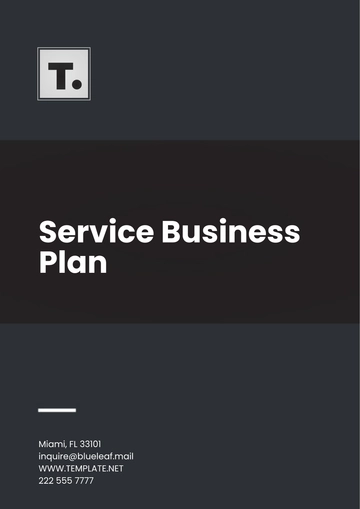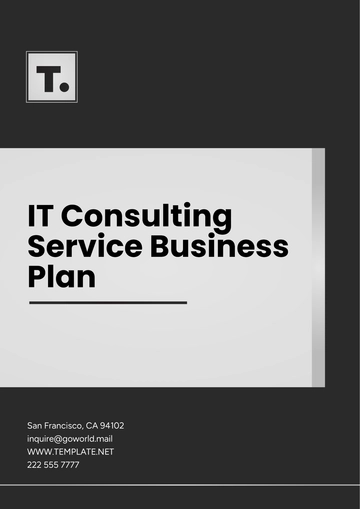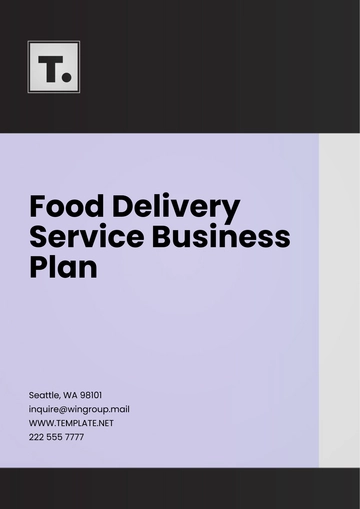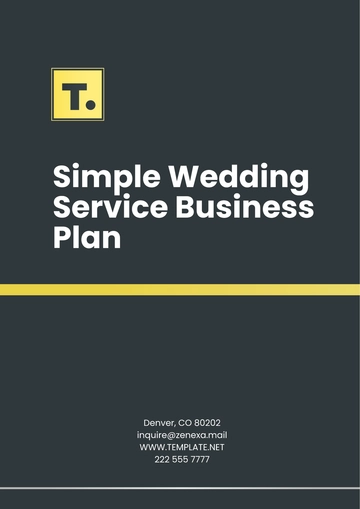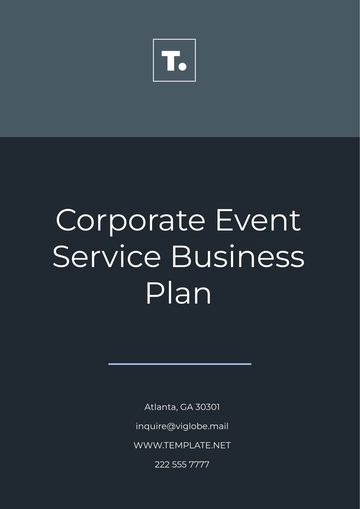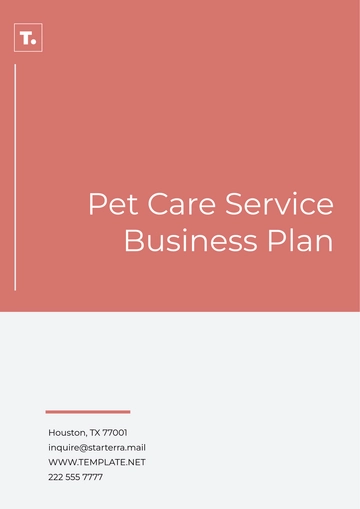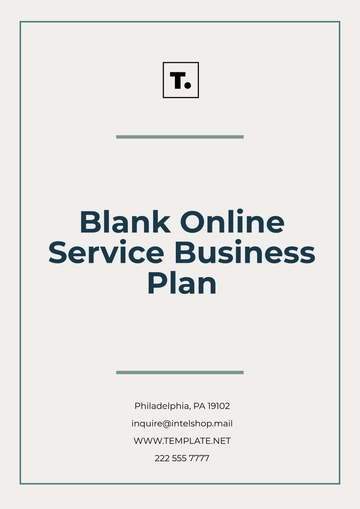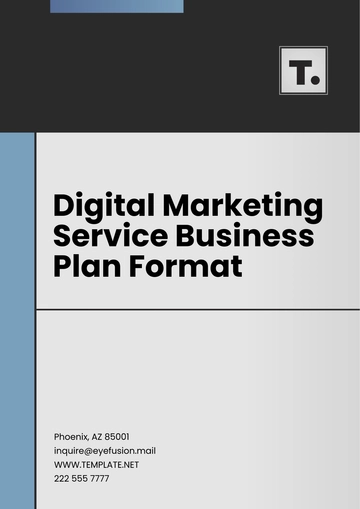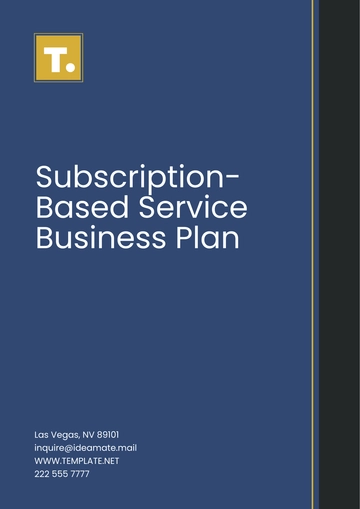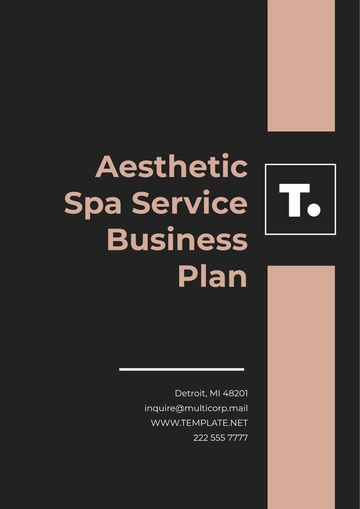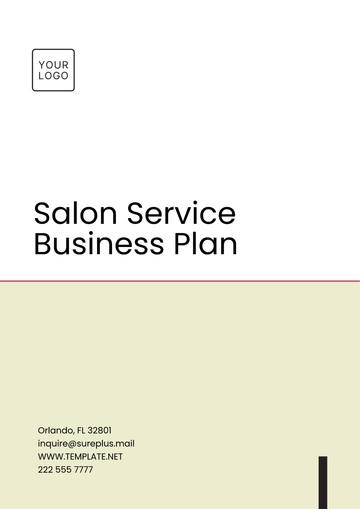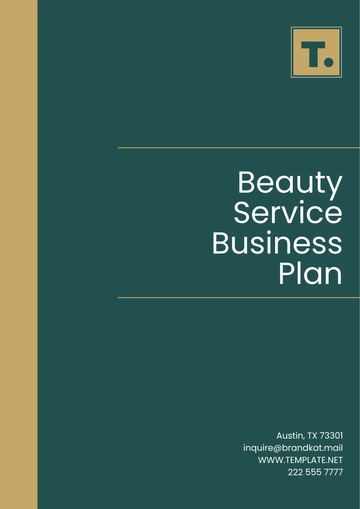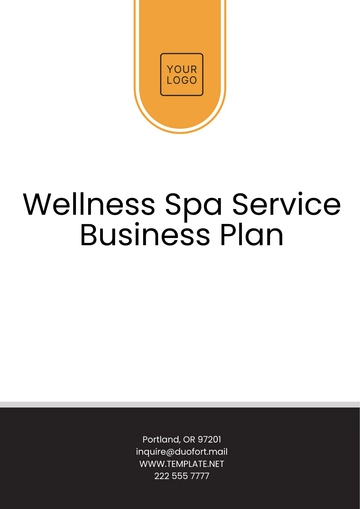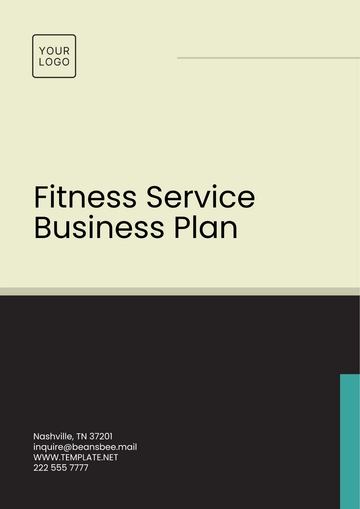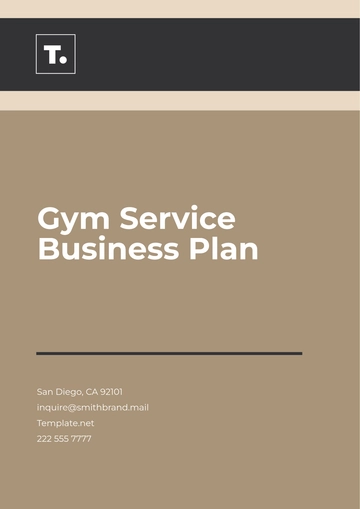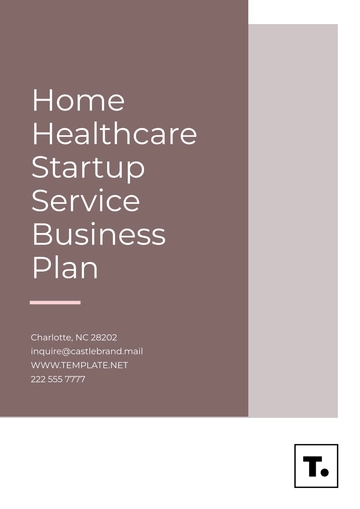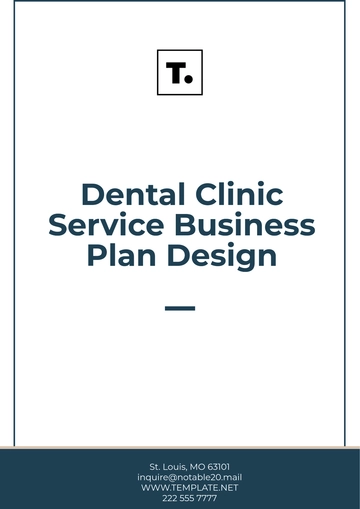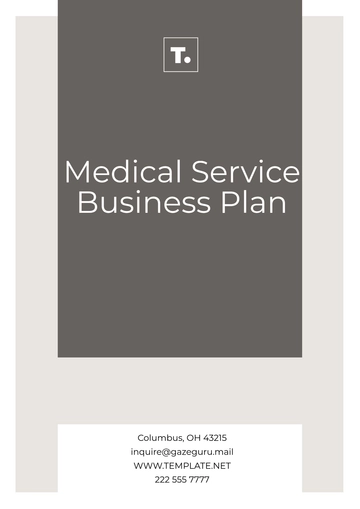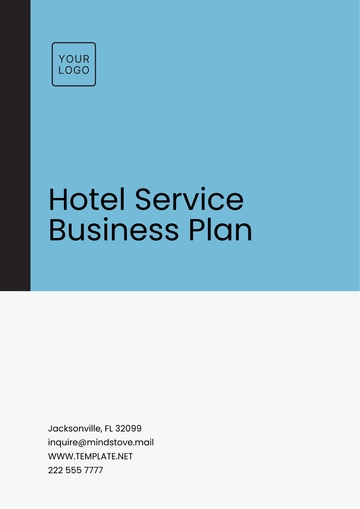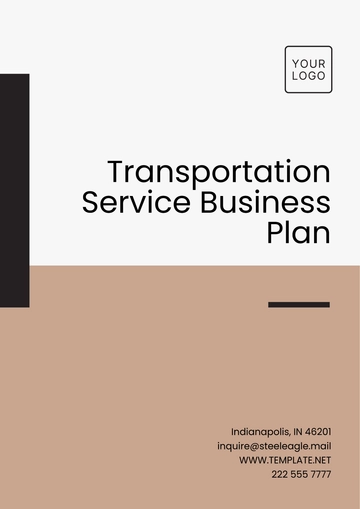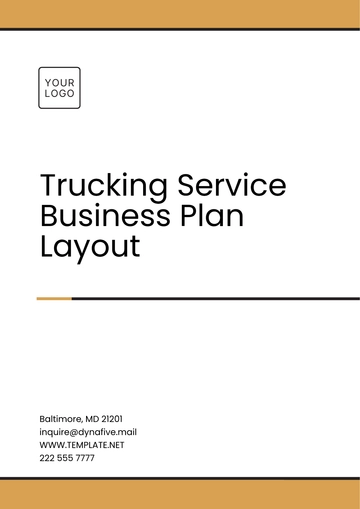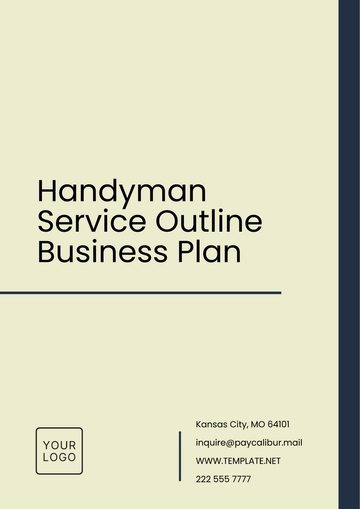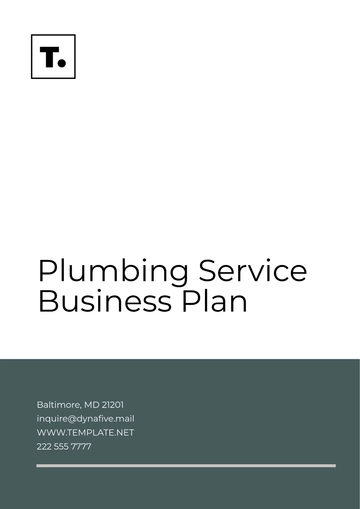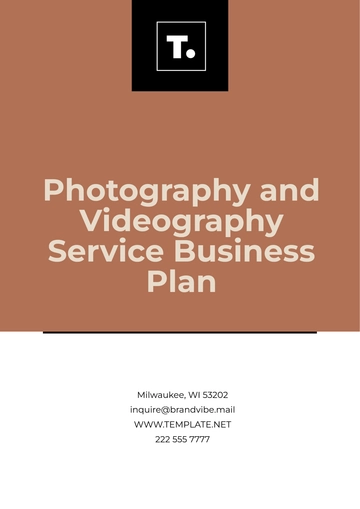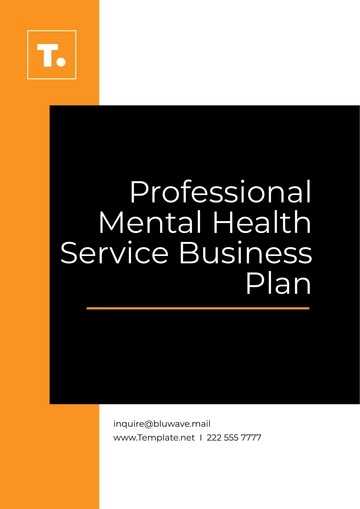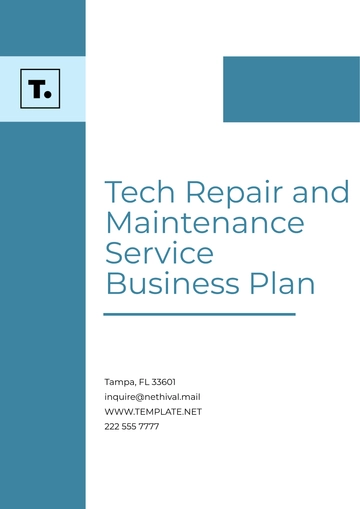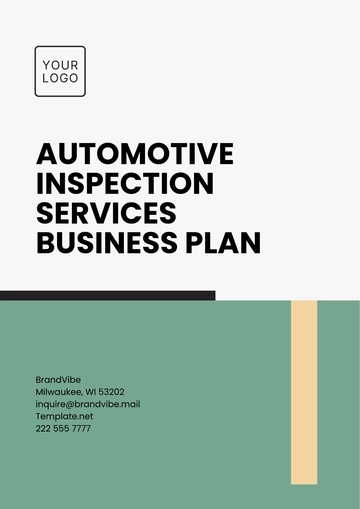Free Creative Consulting Business Plan
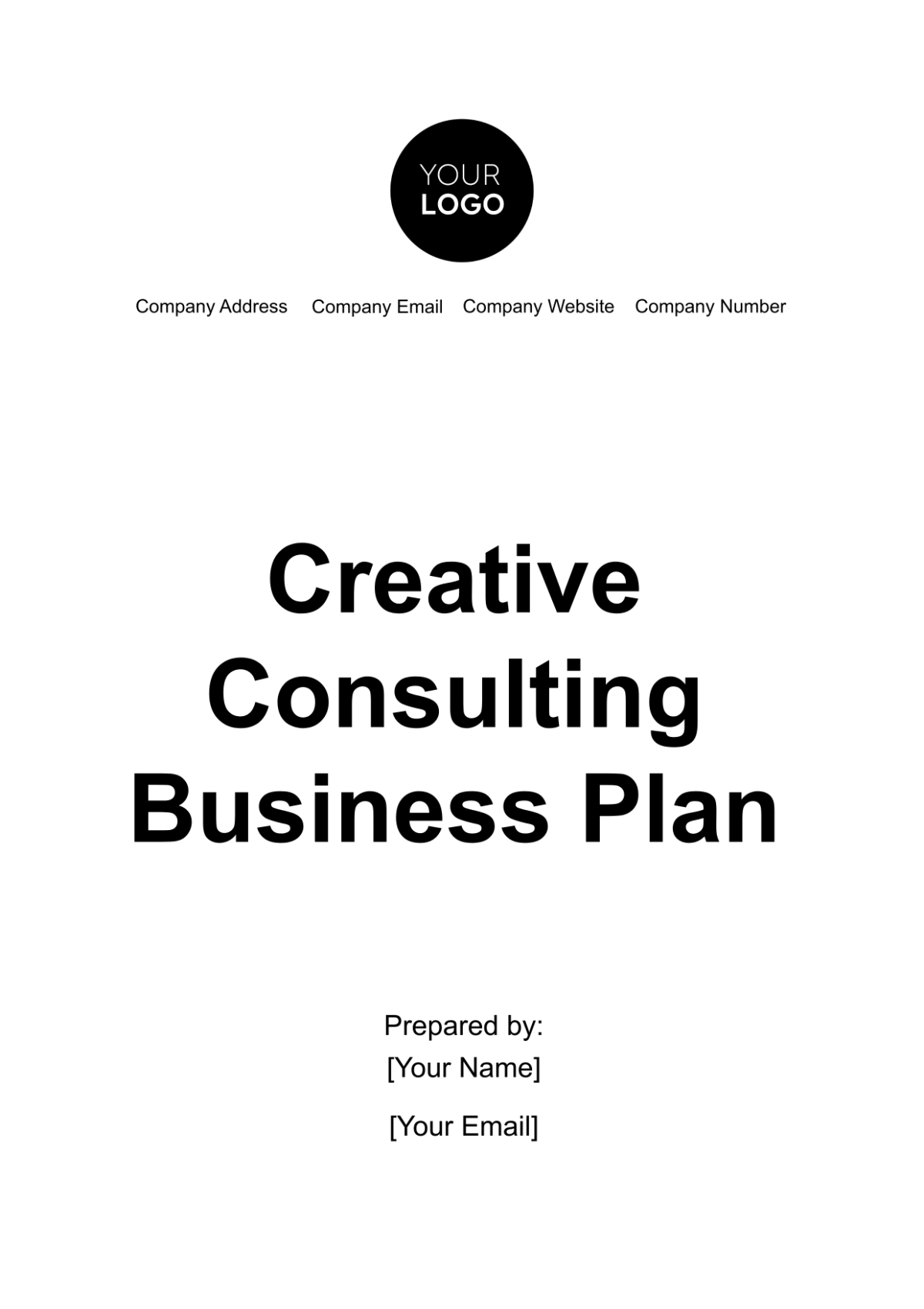
I. Executive Summary
A. Company Overview
Mission Statement:
At [Your Company Name], our mission is to empower businesses with cutting-edge creative solutions that enhance brand visibility, drive customer engagement, and foster sustainable growth. We strive to be a trusted partner for our clients, delivering innovative consulting services that are tailored to their unique needs.Vision Statement:
Our vision is to become a leading creative consulting firm recognized for our exceptional ability to transform brands through creativity and strategic thinking. We aim to set industry standards for excellence, innovation, and customer satisfaction.Company Values:
[Your Company Name] is guided by a set of core values that include creativity, integrity, collaboration, and customer focus. These values shape our business practices and inspire our team to deliver outstanding results for our clients.Business Objectives:
Establish [Your Company Name] as a top-tier creative consulting firm within the first three years of operation.
Achieve annual revenue growth of 15% over the next five years.
Expand our client base by 20% each year through targeted marketing and strategic partnerships.
B. Business Description
Legal Structure:
[Your Company Name] is registered as a Limited Liability Company (LLC) to ensure the protection of personal assets while allowing operational flexibility.Location:
The company is headquartered in [City, State], a strategic location that allows us to serve clients both locally and nationally.Products and Services:
[Your Company Name] offers a wide range of creative consulting services, including brand strategy, digital marketing, content creation, and graphic design. Our services are customized to meet the specific needs of our clients, ensuring that we deliver high-impact solutions.Target Market:
Our primary target market includes small to medium-sized businesses across various industries, including retail, technology, healthcare, and entertainment. We also cater to startups looking to establish a strong brand presence.Unique Selling Proposition (USP):
What sets [Your Company Name] apart is our holistic approach to creative consulting. We combine strategic thinking with creative execution, offering end-to-end solutions that drive measurable results. Our team of seasoned professionals brings diverse expertise and a passion for innovation, making us a trusted partner for our clients.
II. Market Analysis
A. Industry Overview
Market Size and Growth:
The global creative consulting industry has seen significant growth in recent years, driven by the increasing demand for innovative marketing and branding solutions. According to industry reports, the market is expected to grow at a compound annual growth rate (CAGR) of 7.5% over the next five years, reaching a valuation of $15.3 billion by 2028. This growth presents a substantial opportunity for [Your Company Name] to capture market share.Industry Trends:
Digital Transformation: The shift towards digital platforms has created a demand for creative consulting services that focus on digital marketing, social media management, and e-commerce solutions.
Personalization: Consumers are increasingly seeking personalized experiences, prompting businesses to invest in customized creative strategies. This trend aligns with [Your Company Name]’s approach to delivering tailored solutions.
Sustainability: Brands are prioritizing sustainability in their messaging and practices. Creative consulting firms are now incorporating sustainability into brand strategies, offering a unique value proposition to environmentally conscious consumers.
B. Target Market Analysis
Demographics:
Our target clients are businesses and organizations that vary in size, industry, and location but share a common need for innovative and effective creative solutions. These include:Small to Medium-sized Enterprises (SMEs): Companies with 10 to 500 employees seeking to enhance their brand presence and marketing strategies.
Startups: Newly established businesses that need to create a strong brand identity from the ground up.
Established Corporations: Larger organizations looking to refresh their brand or explore new markets.
Psychographics:
Our clients are typically forward-thinking, growth-oriented, and value creativity as a critical component of their business success. They are willing to invest in high-quality consulting services that deliver tangible results.Geographic Location:
While [Your Company Name] is based in [City, State], our services are available to clients nationwide, with a focus on urban areas where businesses are more likely to require creative consulting services.
C. Competitive Analysis
Key Competitors:
The creative consulting industry is highly competitive, with several well-established firms and numerous boutique agencies. Key competitors include [Competitor A], [Competitor B], and [Competitor C]. These firms are known for their extensive client lists and comprehensive service offerings.Competitive Advantage:
[Your Company Name] differentiates itself by offering a personalized, client-centric approach. Unlike larger competitors that may take a one-size-fits-all approach, we prioritize understanding each client's unique challenges and goals, crafting bespoke solutions that align with their vision. Our agility and focus on innovation enable us to respond quickly to market changes and client needs.
III. Services Offered
A. Core Services
Brand Strategy Consulting:
We work closely with clients to develop comprehensive brand strategies that define their identity, positioning, and messaging. Our services include brand audits, market research, and competitive analysis, all aimed at creating a compelling brand narrative that resonates with the target audience.Digital Marketing Solutions:
Our digital marketing services encompass search engine optimization (SEO), social media management, email marketing, and pay-per-click (PPC) advertising. We use data-driven strategies to increase online visibility, drive traffic, and convert leads into customers.Content Creation:
[Your Company Name] offers a full suite of content creation services, including copywriting, video production, and graphic design. Our team of creatives produces high-quality content that aligns with our clients' brand voice and engages their audience across various platforms.Graphic Design and Visual Identity:
We specialize in creating visually stunning designs that capture the essence of our clients' brands. Our services include logo design, packaging design, and visual branding that ensure a cohesive and impactful brand identity.
B. Additional Services
Creative Workshops and Training:
[Your Company Name] offers workshops and training sessions designed to empower client teams with the skills and knowledge needed to implement creative strategies effectively. These sessions cover topics such as branding, digital marketing, and design thinking.Market Research and Analysis:
We provide clients with in-depth market research and analysis to help them understand their target audience, industry trends, and competitive landscape. This data-driven approach ensures that our creative solutions are not only innovative but also strategically sound.Project Management:
Our project management services ensure that creative initiatives are executed smoothly, on time, and within budget. We handle all aspects of project planning, execution, and evaluation, allowing clients to focus on their core business activities.
IV. Marketing Strategy
A. Marketing Objectives
Brand Awareness:
Increase brand awareness by 30% within the first year through targeted marketing campaigns and strategic partnerships.Lead Generation:
Generate 200 qualified leads per month through digital marketing channels, including social media, SEO, and content marketing.Client Retention:
Achieve a client retention rate of 85% by providing exceptional service and building long-term relationships.
B. Target Market Segmentation
Demographic Segmentation:
Our marketing efforts will focus on businesses in the 25-55 age range, primarily decision-makers such as CEOs, marketing directors, and business owners.Geographic Segmentation:
While we operate nationwide, our initial focus will be on major metropolitan areas where demand for creative consulting services is highest.Behavioral Segmentation:
We will target clients who are actively seeking creative solutions, have previously engaged with consulting services, or are looking to reposition their brand.
C. Marketing Channels
Digital Marketing:
We will leverage digital marketing channels, including social media (LinkedIn, Instagram, Twitter), email campaigns, and content marketing to reach our target audience. Our strategy will focus on providing valuable content that positions [Your Company Name] as an industry thought leader.Networking and Partnerships:
Building strong relationships with industry influencers, attending conferences, and forming strategic partnerships will be key components of our marketing strategy. We will also seek opportunities for co-branding and joint ventures to expand our reach.Traditional Marketing:
While digital channels will be our primary focus, we will also use traditional marketing methods such as print advertising, direct mail, and event sponsorships to increase brand visibility.
D. Sales Strategy
Consultative Selling Approach:
Our sales strategy is based on a consultative selling approach, where we focus on understanding our clients' needs and providing customized solutions. This approach builds trust and positions us as a valuable partner rather than just a service provider.Sales Process:
Our sales process includes lead generation, initial consultation, proposal development, negotiation, and closing. We emphasize timely follow-ups and consistent communication throughout the sales process to ensure a seamless experience for our clients.Client Relationship Management (CRM):
[Your Company Name] will implement a robust CRM system to manage client relationships, track interactions, and analyze sales data. This system will help us maintain high levels of customer satisfaction and identify opportunities for upselling and cross-selling.
E. Promotional Strategy
Content Marketing:
We will create and distribute valuable content, such as blog posts, whitepapers, case studies, and infographics, that showcase our expertise in creative consulting. This content will be optimized for search engines and shared across various platforms to attract and engage our target audience.Social Media Marketing:
Our social media strategy will focus on building a strong online presence through regular updates, engaging content, and community interaction. We will use platforms like LinkedIn, Instagram, and Twitter to connect with potential clients and industry peers.Email Marketing:
We will develop targeted email campaigns to nurture leads, share company news, and promote our services. Personalized and segmented emails will help us build stronger relationships with our subscribers and encourage repeat business.Public Relations (PR):
To enhance our brand credibility, we will engage in PR activities such as press releases, media interviews, and thought leadership articles. Our goal is to position [Your Company Name] as an authority in the creative consulting industry.Referral Program:
We will implement a referral program that rewards clients and partners for referring new business to [Your Company Name]. This will help us expand our client base through word-of-mouth marketing.
V. Operations Plan
A. Business Structure
Organizational Structure:
[Your Company Name] will operate with a lean and agile organizational structure, allowing us to adapt quickly to market changes. The company will be divided into the following departments: Creative Services, Digital Marketing, Client Relations, and Operations. Each department will be led by a director responsible for overseeing daily activities and achieving departmental goals.Key Roles and Responsibilities:
CEO/Founder: Responsible for setting the overall vision and strategy of the company, making key business decisions, and representing [Your Company Name] at industry events.
Creative Director: Leads the creative team, oversees the development of brand strategies, and ensures the quality of all creative outputs.
Marketing Director: Manages marketing campaigns, develops promotional strategies, and analyzes market trends.
Client Relations Manager: Ensures client satisfaction, manages client accounts, and serves as the primary point of contact for all client-related matters.
Operations Manager: Handles day-to-day operations, including project management, resource allocation, and logistics.
B. Operational Processes
Client Onboarding Process:
Our client onboarding process is designed to ensure a smooth transition from prospect to active client. It includes an initial consultation, contract signing, project kickoff meeting, and the establishment of clear communication channels.Project Management Process:
[Your Company Name] follows a structured project management process that includes planning, execution, monitoring, and closing. We use project management software to track progress, manage deadlines, and allocate resources efficiently.Quality Control:
Quality control is a top priority at [Your Company Name]. We have implemented rigorous quality assurance processes to ensure that all deliverables meet our high standards. This includes regular reviews, client feedback loops, and continuous improvement initiatives.Vendor and Partner Management:
We work with a select group of vendors and partners to deliver specialized services such as printing, media buying, and software development. Our vendor management process includes regular performance evaluations and contract negotiations to maintain strong partnerships.
C. Technology and Tools
Project Management Software:
[Your Company Name] will use [Software Name] for project management to streamline workflows, track project milestones, and ensure timely delivery of services.Creative Tools:
Our creative team will use industry-standard tools such as Adobe Creative Cloud, Sketch, and Figma for design work, ensuring high-quality outputs that meet client expectations.Analytics and Reporting Tools:
We will leverage analytics tools such as Google Analytics, HubSpot, and SEMrush to monitor the performance of our marketing campaigns and measure ROI. These tools will provide valuable insights that inform our decision-making processes.Communication Tools:
Effective communication is critical to our operations. We will use platforms like Slack, Zoom, and Microsoft Teams to facilitate collaboration among team members and maintain clear communication with clients.
D. Facilities and Equipment
Office Space:
[Your Company Name] will lease a modern, open-concept office space in [City, State] that fosters creativity and collaboration. The office will include dedicated areas for meetings, brainstorming sessions, and quiet work.Equipment:
The company will invest in high-quality equipment, including powerful computers, design tablets, and video production tools, to support our creative and digital marketing services.Remote Work Capabilities:
To accommodate flexible work arrangements, [Your Company Name] will implement remote work policies and provide employees with the necessary tools to work from home efficiently. This includes VPN access, cloud storage, and remote collaboration software.
VI. Financial Plan
A. Revenue Model
Service-Based Revenue:
[Your Company Name] generates revenue primarily through service-based fees. Clients are charged for consulting services, project deliverables, and ongoing support. Pricing is determined based on the scope of work, the complexity of the project, and the level of expertise required.Retainer Agreements:
We will offer retainer agreements to clients who require ongoing creative consulting services. These agreements provide a steady stream of income and help build long-term relationships with clients.Workshops and Training:
Additional revenue will be generated through workshops and training sessions offered to clients and industry professionals. These sessions are designed to enhance participants' skills in areas such as branding, digital marketing, and creative thinking.
B. Financial Projections
Projected Revenue:
Based on our market research and sales forecasts, [Your Company Name] expects to generate $500,000 in revenue in the first year of operations. Revenue is projected to grow by 15% annually, reaching $1,200,000 by the end of year three.Projected Expenses:
Initial expenses include office lease, equipment purchase, salaries, marketing, and technology subscriptions. Total expenses for the first year are estimated at $350,000, with a gradual increase as the company scales operations.Profit and Loss Statement:
In the first year, [Your Company Name] anticipates a net profit of $150,000. By year three, net profit is expected to increase to $500,000, reflecting the company's growth and operational efficiency.Cash Flow Statement:
Positive cash flow is critical to maintaining business stability. We project a positive cash flow from the first year, supported by strong sales and prudent expense management. Cash reserves will be used to fund expansion initiatives and cover unexpected costs.Break-Even Analysis:
The break-even point is expected to be reached within the first 12 months of operation. This analysis is based on fixed costs, variable costs, and projected revenue. Achieving this milestone will mark a significant step toward financial sustainability.
C. Funding Requirements
Startup Capital:
[Your Company Name] requires $300,000 in startup capital to cover initial expenses, including office setup, equipment purchase, marketing, and operational costs. This capital will be sourced through a combination of personal savings, loans, and investor funding.Investment Strategy:
We will seek investment from venture capitalists and angel investors who are aligned with our vision and growth strategy. In return, investors will receive equity in the company and a share of future profits.Use of Funds:
The funds raised will be allocated as follows:30% for marketing and brand awareness campaigns.
25% for office lease and equipment.
20% for salaries and operational costs.
15% for technology and software subscriptions.
10% for contingency and reserve.
D. Financial Risk Management
Risk Analysis:
Key financial risks include market competition, economic downturns, and changes in client demand. To mitigate these risks, [Your Company Name] will implement diversification strategies, maintain cash reserves, and continuously adapt our service offerings to meet market needs.Contingency Plan:
In the event of financial challenges, [Your Company Name] will reduce operational costs, renegotiate vendor contracts, and explore alternative revenue streams to maintain financial stability. Our contingency plan ensures that the company can navigate unforeseen circumstances without compromising long-term growth.
VII. Management Team
A. Leadership Team
Founder/CEO:
The founder and CEO of [Your Company Name] brings over 15 years of experience in creative consulting, marketing, and brand strategy. With a proven track record of success in the industry, the CEO is responsible for setting the company's vision, driving growth, and overseeing all aspects of operations.Creative Director:
The Creative Director leads the creative team, ensuring that all projects meet the highest standards of quality and creativity. With expertise in design, branding, and visual communication, the Creative Director plays a crucial role in shaping the company’s creative direction.Marketing Director:
The Marketing Director is responsible for developing and executing marketing strategies that drive brand awareness and generate leads. With a deep understanding of digital marketing, social media, and content creation, the Marketing Director ensures that [Your Company Name] remains competitive in the market.Operations Manager:
The Operations Manager oversees the day-to-day operations of the company, including project management, resource allocation, and process optimization. With a focus on efficiency and productivity, the Operations Manager ensures that the company runs smoothly and delivers exceptional results to clients.
B. Advisory Board
Industry Experts:
[Your Company Name] will establish an advisory board composed of industry experts with extensive experience in creative consulting, marketing, and entrepreneurship. The advisory board will provide strategic guidance, mentorship, and industry insights to support the company's growth and development.Investor Representatives:
To maintain strong relationships with investors, [Your Company Name] will include investor representatives on the advisory board. These representatives will offer valuable perspectives on financial strategy, risk management, and business expansion.
- 100% Customizable, free editor
- Access 1 Million+ Templates, photo’s & graphics
- Download or share as a template
- Click and replace photos, graphics, text, backgrounds
- Resize, crop, AI write & more
- Access advanced editor
The Creative Consulting Business Plan Template on Template.net is designed for consulting firms seeking a strategic approach. This editable and customizable template outlines key business elements, including services, target markets, and financial projections. Use our Ai Editor Tool to create a professional plan that reflects your consulting expertise and goals.
You may also like
- One Page Business Plan
- Coffee Shop Business Plan
- Restaurant Business Plan
- Food Business Plan
- Real Estate Business Plan
- Executive Summary Business Plan
- Cover Page Business Plan
- Nonprofit Business Plan
- Daycare Business Plan
- Construction Business Plan
- Startup Business Plan
- Medical Business Plan
- Bakery Business Plan
- Service Plan
- Hotel Business Plan
- Catering Business Plan
- School Business Plan
- Healthcare Business Plan
- Transportation Plan
- Sports Plan
- Car Wash Business Plan
- Salon Business Plan
- Clothing Business Plan
- Farming Business Plan
- Boutique Plan
